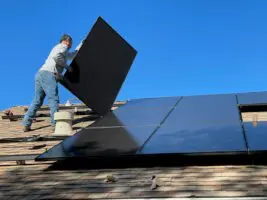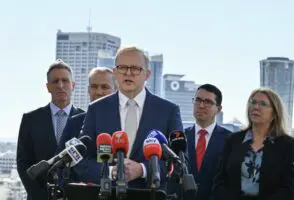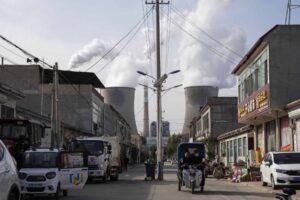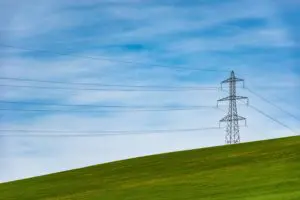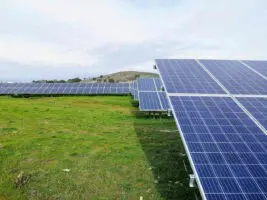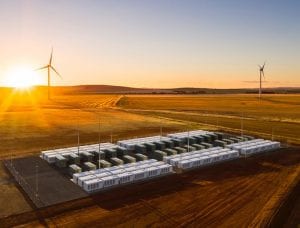Since the appointment of Angus Taylor as energy minister in the Morrison government on Sunday, RenewEconomy has been deluged by phone calls, texts, emails and social media links from people wishing to share the story of their encounter with the new energy minister on the subject of renewables.
Few were complimentary. Many pointed to his appearance at the “Wind Power Fraud Rally” in Canberra, organised by an anonymous and hate-filled website and which was hosted by shock-jock and renewables opponent Alan Jones. You can hear his speech here, and read the transcript here.
Taylor was one of half a dozen Coalition politician MPs who spoke at the rally, whose organisers are a charming lot, as illustrated by renewable energy commentator Ketan Joshi in this tweet.
FYI, the ‘Stop These Things’ group published death threats and instructions for suicide directed towards renewable energy advocates, and they have a racist nickname for me. It’s anonymous, no one knows who runs it. https://t.co/2d0JbbENk6
— Ketan Joshi (@KetanJ0) August 26, 2018
Others pointed to Taylor’s blueprint for scrapping the RET, which can be found here. Some pointed to a recent interview Taylor granted to another 2GB shock-jock, Ray Hadley. You can hear that conversation here.
Others recounted their individual efforts to engage with Taylor, such as this one from a local constituent, who didn’t get too far before being blocked on Twitter.
I once asked Angus Taylor on Twitter why he wasn’t more supportive of the job creation associated with the wind farms in our region. I asked politely. It was a genuine question. I’m a constituent of Hume. He blocked me. #newgeneration
— Marj (@MarjorieGarante) August 26, 2018
And, for balance, we should mention that Liberal MP Craig Kelly also jumped in, saying on his Facebook page that “GREEN RENT-SEEKERS FOAMING AT THE MOUTH OVER APPOINTMENT OF ANGUS TAYLOR AS ENERGY MINISTER,” using the cap button for emphasis.
His audience cheered, calling for Australia to tear up the Paris climate treaty. Kelly went on: RenewEconomy the “well-financed propaganda arm of Chinese Solar/Wind manufacturers – that pocket billions in subsidies, paid for by higher electricity prices in Australia) they have gone in full panic mode.”
Kelly, the head of the Coalition back-bench committee on energy, and another speaker at the Wind Power Fraud Rally, seems to be particularly miffed that we had asserted in our profile piece on Taylor on Sunday that “Taylor’s views are no less extreme than Craig Kelly’s, although better articulated”.
But perhaps the most interesting report was the one we received from renewable energy enthusiastic and blogger, and occasional contributor to RenewEconomy, David Clarke.
Below is a transcript of a Facebook conversation Clarke had with Taylor, way back in 2012, before Taylor was pre-selected for the federal seat of Hume, but amid his active opposition to wind farms, and his campaign to call for the end of subsidies to renewables.
What caught our eye – apart from some factual errors around the ability of coal plants in China to operate at 100 per cent capacity (their average output has been 47 and 48 per cent over the last two calendar years) – was his insistence that gas was a more effective way of reducing emissions.
What a shame, then, that his energy portfolio should be stripped of emissions targets. The cost of wind is now half of what Taylor said it was in 2012, solar is matching it in price after a 90 per cent fall (thanks to subsidies), and the cost of gas has surged. What does Taylor now assume to be the cheapest cost of abatement?
Anyway, all that’s to be learned. Here is the transcript delivered by Clarke.
Clarke:
Mr Taylor, you said in the Goulburn Post some time ago “It is also clear that there are much cheaper ways [than wind turbines] to reduce carbon emissions”. Could you please tell the world what those much cheaper ways are? We desperately need to know.
Taylor:
David, wind power is a very expensive way to reduce carbon emissions. Reducing carbon emissions via wind turbines costs around $60-100/ tonne. The current Australian carbon tax is $23, and carbon credits in Europe are less than $10. The reason these prices are so much lower than the cost of abatement via wind, is there are many other cheaper options than wind (which is why wind needs a big subsidy over an above the carbon tax).
These alternatives include changes in building practices, home solar water (in the right places), household energy efficiency measures, and replacement of coal with CONVENTIONAL gas to reduce emissions (and even non-conventional from the right locations). Other promising technologies include geothermal and photovoltaic cells, but these are still quite expensive. If you are interested, you will find much more detail on the cheaper options to reduce carbon dioxide emissions in this very good piece of research: http://www.epa.gov/oar/caaac/coaltech/2007_05_mckinsey.pdf“. (Ed: This link is no longer available).
Taylor:
David, By the way, this is widely accepted amongst energy experts. It is not particularly controversial, but it is amazing how the facts don’t matter when a debate gets emotive. Thanks for your interest! Angus
Clarke:
I see that the Chinese are on track to install 18GW of wind power this year, that’s seven times all the wind power we have in Australia. They must think that wind is cost-effective. You would say that they are wrong? You are right that we should explore other options, but wind power has the greatest potential to replace fossil fuels, as shown by South Australia going from 0% to 26% wind power from 2003 to 2011 and its percentage of coal-power going from 42% down to 25% over the same period. You are right about the potential of solar PV (and solar thermal has a lot of untapped potential), but you should know that geothermal has been tried in Oz over the last 10 years or so and has not been successful.
Taylor:
Thank for your interest, but let’s focus on the facts. Wind power is almost irrelevant in the Chinese grid – it is too expensive to play a real role. China CURRENTLY has around 1,000 GW of generation capacity growing at around 6-10% per year (60-80 GW per year) – 18 GW of wind turbines running at 30% utilisation (which is typical wind utilization) is irrelevant. China is using wind as a means of building an equipment supply business to the developed world – it is an insignificant as part of China’s energy policy. The truth is that nearly all of the hew capacity is Coal, with some gas and nuclear. No amount of ‘spin’ will change these facts.
Clarke:
Angus; Irrelevant? Insignificant? Accepting your figure of 60-80GW additional electricity generating capacity in China each year, and 18GW of that being wind power, [it is easy to calculate that] from 22-30% of the power infrastructure they are installing is wind. No amount of spin will change this fact. Yes they are installing a lot of coal; it is cheap and dirty.
Taylor:
David, let’s focus on facts, not rhetoric. Even if the Chinese managed to get all of those turbines up, remember that coal runs at near 100% utilisation, wind at around 30% (in a good spot!). So divide your numbers by more than three. Then recognise that to get that outcome, they have put in place large subsidies. Moreover, remember that China is targeting growth of about 8-9 GW per year between 2011 and 2015 – not 18 GW per year. I know the Chinese energy market well – wind is not playing any relevant role solving their major problems, because it is too expensive. BUT let’s get back to the core issue – Stern, Guarnaut the IPCC and other leading climate change ‘thought leaders, recognise that wind is an expensive way to reduce carbon emissions. Please read the article up above – it is clear, widely accepted and well researched.
Clarke:
As you said, let’s focus on facts, not rhetoric.
Fact; You claim that wind power is “gobsmackingly inefficient” and “it is also clear that there are much cheaper ways to reduce carbon emissions”. Yet China is building many, many wind turbines; apparently more wind power than any other form of renewable energy except, perhaps, hydro (if you can call Chinese hydo renewable, considering the environmental damage and displaced population). Are you implying that the Chinese are stupid?
Fact; coal fired power stations run at about 85% availability, not 100%; the remainder of the time they are shut down for routine maintenance or for breakdowns. (Wind in SE Australia, by the way, has an average capacity factor of 34%, not 30%.)
Fact; burning coal causes a huge health burden. A paper published in the prestigious health journal, The Lancet; “Electricity generation and health”, by Anil Markandya and Paul Wilkinson (Sep 15-Sep 21, 2007; 370, 9591; Research Library pg. 979), regarding coal-fired power in Europe, stated that air pollution from coal fired power stations result in 24 deaths and 225 serious illnesses per Terawatt-hour of electricity generated. 1GW of coal-fired power station running at 85% capacity factor would generate about 7.4TWh of electricity in a year, from which, if it was in Europe, you could expect about 180 death and 1700 serious illnesses each year. You can probably imagine how much worse it would be with the laxer pollution standards in China. Yes, wind power is more expensive, but it doesn’t kill people.
Fact; Coal-seam-gas causes leakage of the highly active greenhouse gas methane into the atmosphere and still produces CO2 when it is eventually burned.
Taylor:
David, I have an updated abatement curve with the same results in hard copy. I’m sure you’ll find the soft copy if interested – it was central to the Copenhagen and subsequent debates. I’m sure you are well enough informed to know the core results have not changed for what is required to reach targets in the next few years. You will also find that Stern, Garnaut and others don’t see abatement from $60-80 options in the short to medium term. Let’s move on people, Angus”
At this point, Clarke tells us, Taylor deleted the conversation from his Facebook page. But Clarke kept a copy and has it on his own blog page, ramblingsdc.net/Australia/AngusTaylor


